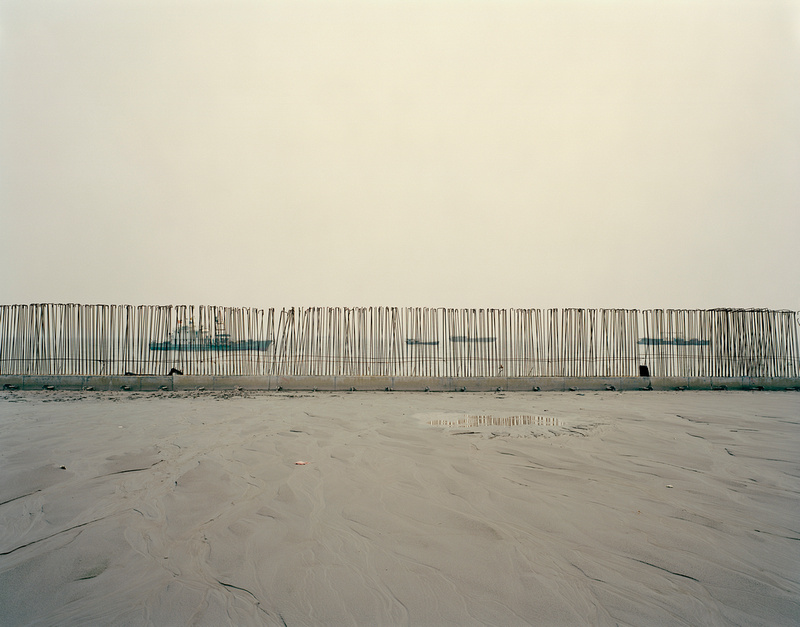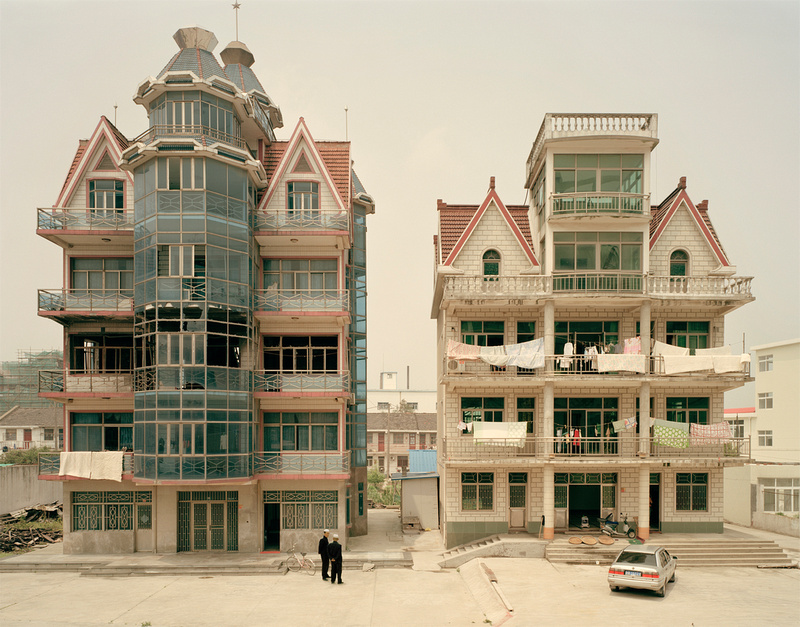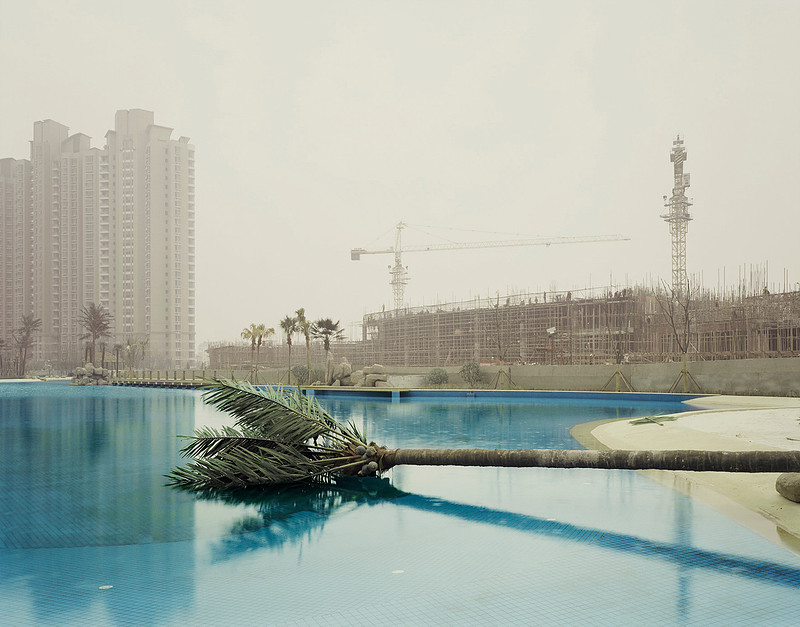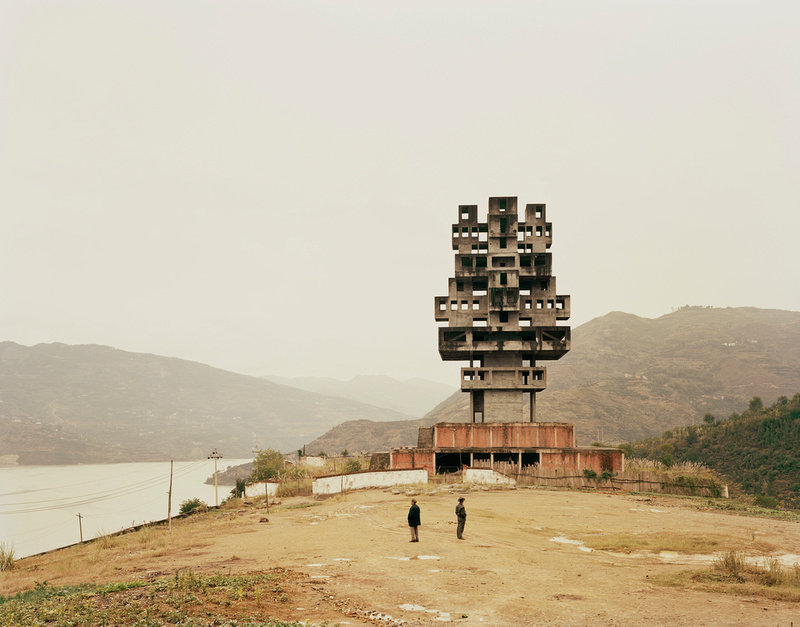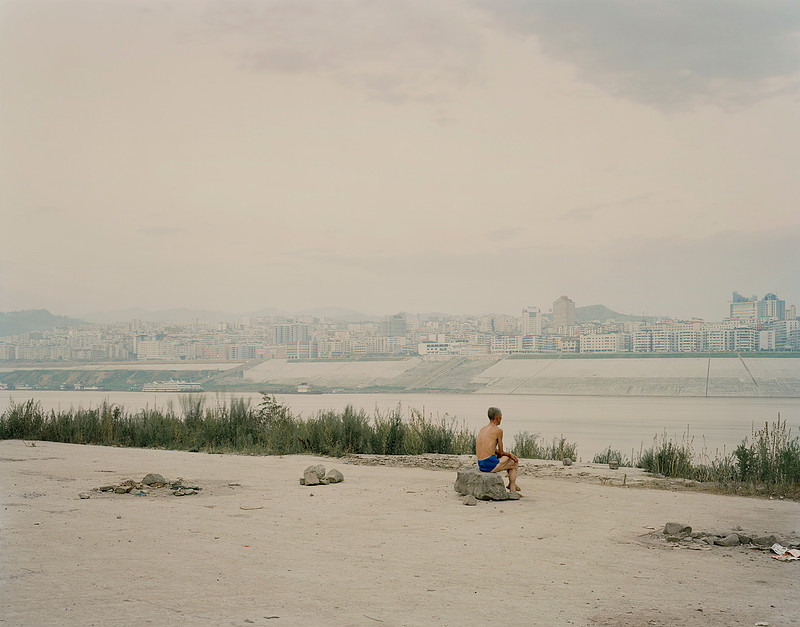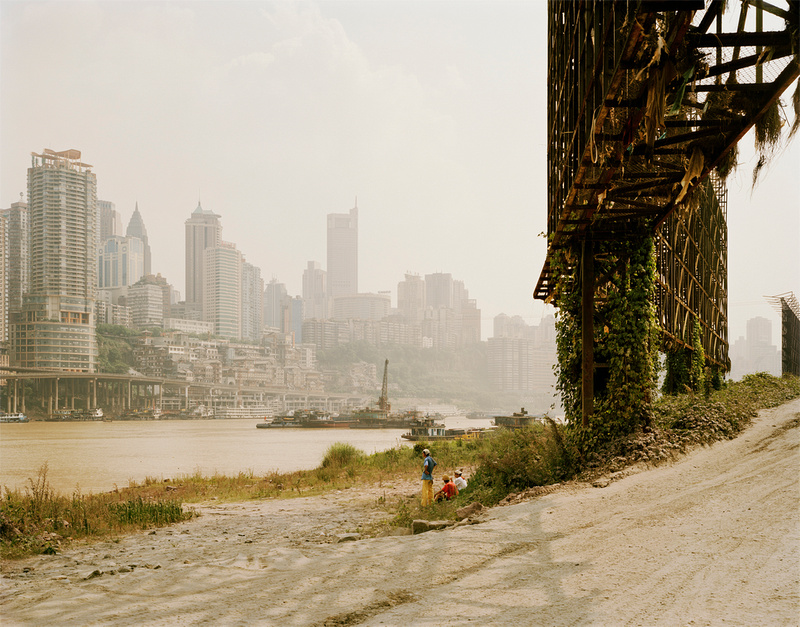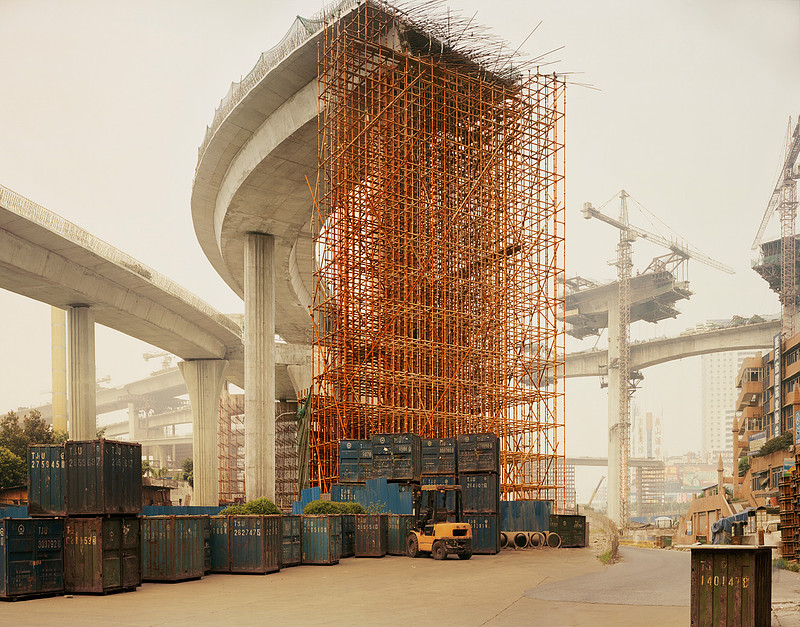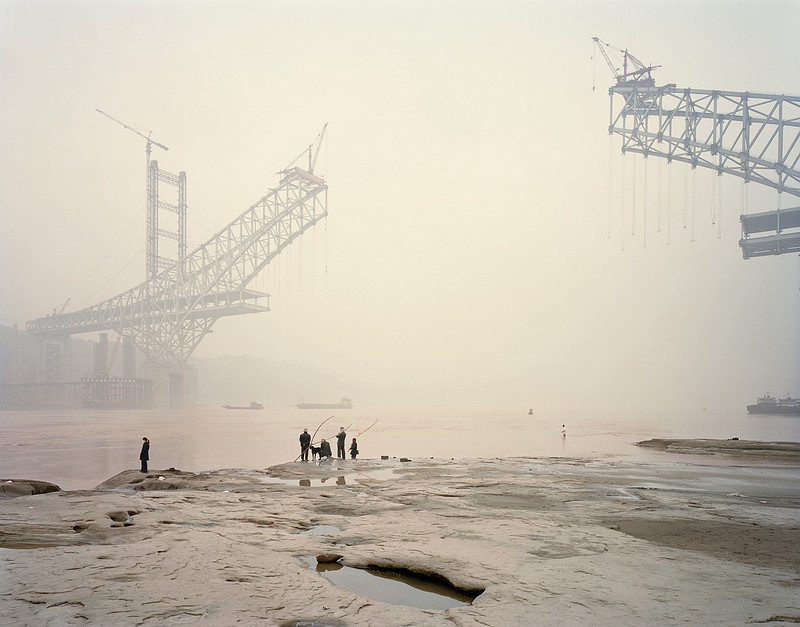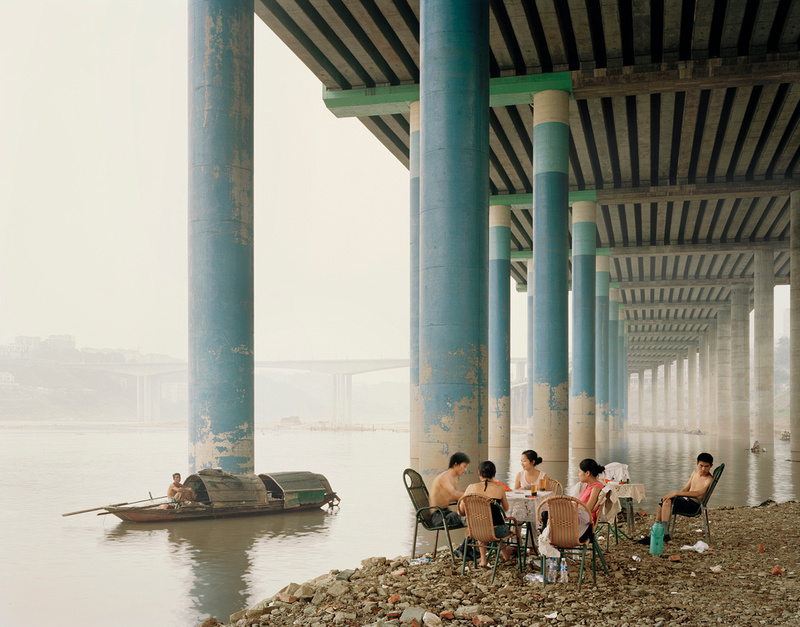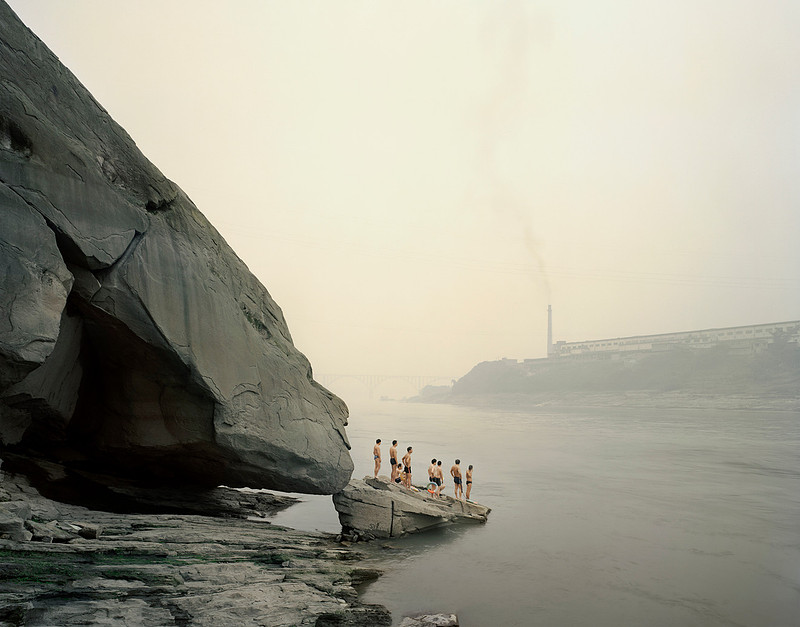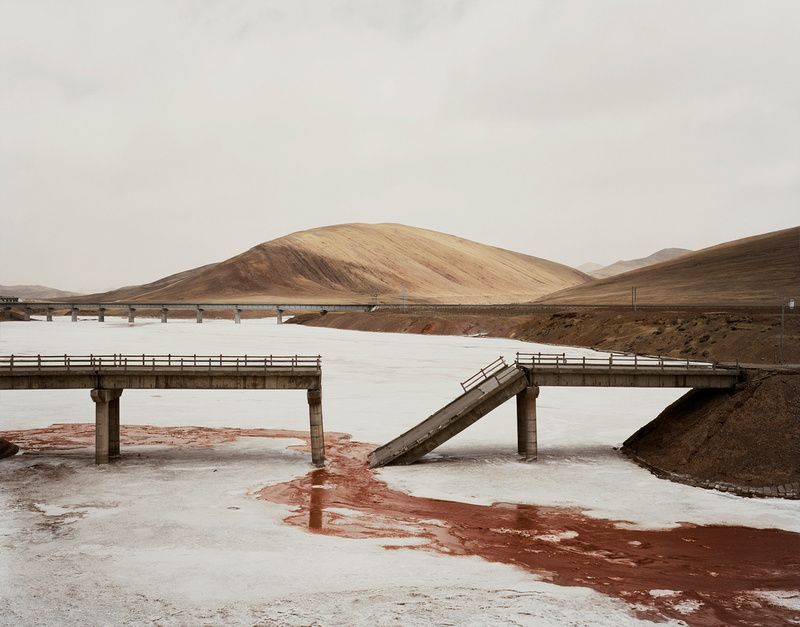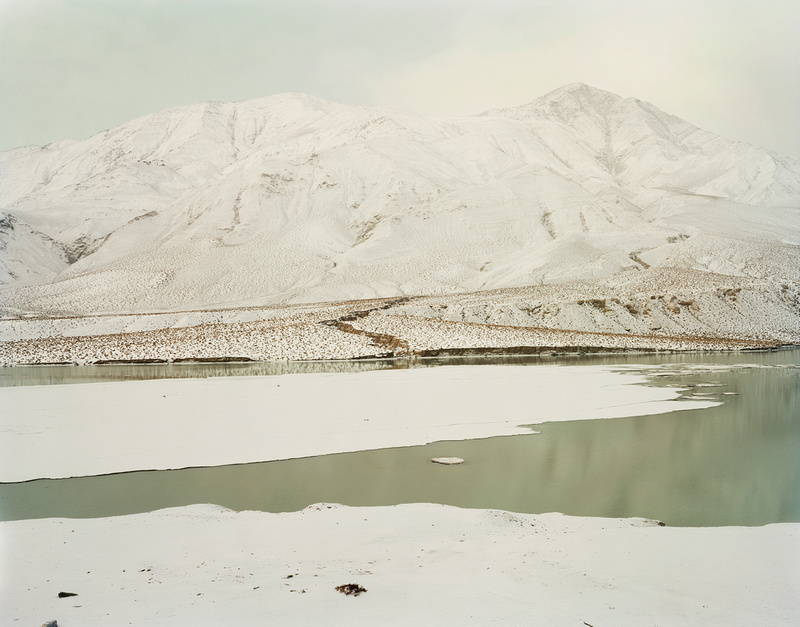Guest Photographer: Nadav Kander, Yangtze, The Long RiverArt has a habit of starting off as one thing and ending up as another. So when Nadav Kander first had the idea for the project that would become Yangtze, The Long River, he had no intention of making a documentary - in fact no clear plan at all. And yet the book containing the full set of images has a foreword by Kofi Annan, who presented the 2009 Prix Pictet to Kander for the work. In that introduction, Annan says of the images that 'they confront us with the need to maintain the political pressures on the world's policy makers to take urgent action to secure the future of our planet.' So a series of photographs that started as a loose idea has ended not only as a great work of art, but as a documentary and a force for political and environmental change. As a man who has experienced dislocation himself (born in Israel, raised in South Africa, works mainly out of England) and who has a recent family history of geographical shift (Russia, Germany) he finds himself drawn to the vulnerability of those displaced by the forces of history. It was this spark of empathy that first took him to China, and then drew him back a further four times, 'scouring and looking for pictures that made me tick,' as he puts it.
Changxing Island I (Island of Oranges), Shanghai Travelling with an assistant and a 4x5 film camera, he traced the course of the Yangtze river from mouth to source and in so doing, created a body of work that follows the history of China itself - from the glossy, technologically cutting-edge city of Shanghai through the smoggy, industrialising interior to the pristine source, which looks as it must have done for millennia before the industrial age.
Pudong I, Shanghai Along the way he passed a population greater than that of the entire United States of America for, on the banks of this one river, lives an astonishing eighteen percent of the entire human race. And as a major source of transport, power, irrigation and water supply in the world's most populous and most rapidly developing nation, a huge number of those people are in transition.
Nanjing II (Metal Palm), Jiangsu Province These transitions are economic, social, political, cultural and most dramatically geographical. Many of the villages in which people were born and raised can no longer be visited; they have been razed, replaced by new cities or huge highways, by factories and facilities and bridges and dams. Entire valleys are gone, the landscape itself gouged and roughly re-shaped so as not to stand in the way of progress. The fate of this river is, then, a powerful metaphor for the nation and its people, their past, present and future re-shaped, straightened, tapped, made more efficient, more useful, less beautiful and less natural.
Fengjie III (Monument to Progress and Prosperity), Chongqing Municipality The river itself, now running with the toxic overflows of agriculture and industry, has an almost spiritual role in China's consciousness. As an inspiration for poets over many generations it has shaped the sense that people have of what it is to be Chinese and, in its latest iteration, it remains true to this role. As Kander's images show, the poetry has not gone though it has adopted a less romantic, darker and sadder tone. What started as a love song has become a lament.
Old Fengdu II, (Looking At New Fengdu), Chongqing Municipality Signature motifs of the series are many and are worth observing, because this is how a master at the top of his game draws together the disparate strands of so many images taken over so much time and distance into something which is both aesthetically and narratively whole. The colour palette, majoring on exhausted, sear browns and smoggy greys (but very often with a splash of blue) is reminiscent of traditional Chinese 'wash' painting, known as Shui-mo, but the compositions and content contain elements of Gong-bi, the more calligraphic style, which manages to be both highly detailed and minimalist at the same time.
Chongqing II, Chongqing Municipality Kander also uses the nature of the light very knowingly: the displaced people are often shown in sharper, foreground relief against the hazy, smog-stained technology rising around them. But in many scenes, the people are absent altogether, having dissolved into nothingness under the onslaught of the technology that is meant to serve them.
Chongqing I, Chongqing Municipality The use of scale is as important as that of light and perspective: I am reminded, in some of these images, of those stunning Spielberg juxtapositions of scale between humanity and monolithic spacecraft, used to indicate absolute dominance over absolute fragility.
Chongqing XI, Chongqing Municipality I own a very large, framed print of the image above and I want to say clearly that, beautiful though it might look on a web page or in a book, its true nature is revealed only at the scale of a more-than-one-metre-wide print. The detail is meticulous but not dominant, the tonality and transitions displaying the subtlety that come naturally to 4x5 film, carefully stitched from more than one shot. It is jaw-droppingly lovely, and I fell in love with it the first moment I saw it when this series was shown at Flowers East gallery in London. Kander does not, however, shoehorn the images into too tight a narrative: there are other scenes where the monoliths accommodate the people, being turned to unintended human uses. Below is one of the most iconic images of the series, and it makes the point that this story is not about extinction but rather, enforced adaptation - about human strength as much as about human vulnerability. The flyover and bridge may be newly built, the people apparently sidelined in the expressway rush to make and to ship product; but the sampan still finds space on the waters and the family picnic indicates that life will go on, using the monster that towers over them for protection rather than transportation.
Chongqing IV (Sunday Picnic), Chongqing Municipality Similarly here, the bathers are not about to give up their pursuit of leisure in the face of the glowering hulk or steaming stacks opposite.
Yibin I (Bathers), Sichuan Province As the series moves further up river, the colour palette and the light begin to shift towards the more naturalistic. The scale of the landscape starts to dominate that of the built environment, showing that it has the longer game in mind, and the power to overwhelm the incursions of man. The following shot is wonderfully metaphoric: the river may be bleeding from its injuries, but it has delivered a fatal blow to the bridge.
Qinghai Province II Finally, there is a return to the source, to the pristine, and to some sense of the abiding nature of a land so vast in scope that at its deep heart it remains unchanged. |

